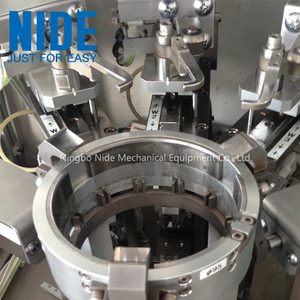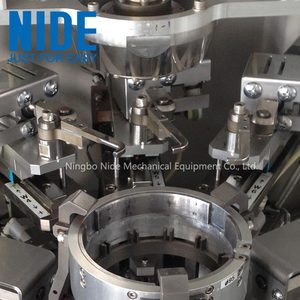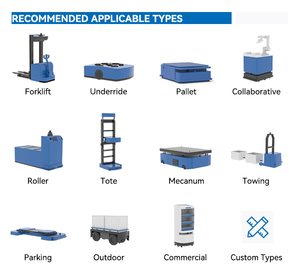
All categories
Featured selections
Trade Assurance
Buyer Central
Help Center
Get the app
Become a supplier

(1851 products available)



























A BLDC motor winding machine is an equipment used to make the windings of series, shunt, universal, or separately excited machines. It can be fully automatic, semi-automatic, or even manual. Fully automatic machines do not require human intervention, apart from changeovers when changing to a different product. They reduce the probability of human error increasing productivity. Semi-automatic machines require human operators to assist with some functions but are still automated for certain tasks. Manual machines are purely mechanical with no automation whatsoever. These machines are typically used for the winding process alone, but sometimes they are integrated with other functions such as pulling, jacking, bobbin change, insulating, and cutting.
The machines can be further classified into the following types:
Vertical/ Inline machine:
One standard type of winding machine is the vertical/inline machine, an automatic BLDC machine. It features many spools loaded in a vertical position to wind wire on an armature or stator. The workpiece is placed on a horizontal spindle, then the cycle begins with the operator switching it on. The armature or stator will start spinning as the wire is wound onto it at a preset speed that the operator can input. These machines are mainly used to wind the field coils of small-sized motors.
Horizontal/ Inline machine:
Horizontal or inline winder machines are similar to their vertical counterparts. However, they are positioned horizontally, which may give them more stability than an inline machine. The spools wind the wire in a straight line rather than an upright position. Again, the operator can select the speed at which the machine will rotate. This machine is mostly used for large fields that require larger wires to be wound. They are also used to wind fields with many turns that need thicker wires.
Universal rotary winding machine:
These winding machines are mainly used for armature, rotor, or stator windings. They have a rotary table that moves in a specific direction or repeats a certain action to unwind the wire on a part. It may be automated, semi-automated, or manual. The universal rotary winding machine can be programmed to carry out some of the winding jobs and is very precise in its work. As a result, they are excellent for use where consistency and precision are critical, such as in the aerospace, medical, or military industries.
Winding machines are used to wind magnets for a variety of motors, including stepper motors, servo motors, DC brushless motors, and more. Here are some specifications for a few different kinds of winding machines for BLDC motor stators and rotors.
Another specification for a double-station, automatic BLDC motor winding machine is as follows:
It is essential to carefully inspect and maintain the coil-winding machine for BLDC motors so that it can perform its best and have a long service life. Below are some general maintenance tips:
Professional BLDC motor coil winding machines cater to various applications with different requirements. They are used to produce stator and rotor windings for all kinds of BLDC motors, such as the following:
High-Power Industrial Motors
For big motors made for heavy-duty tasks, there's a need for high torque. This is the case for BLDC motors used in conveyor belts, gantry cranes, wind turbine generator drives, etc. Winding these high-power motors requires considerable precision to achieve the desired performance. Because of this, professional winding machines are preferred for making the winding of the stator and rotor for high-power BLDC motors.
Automotive Motors
Many parts of electric cars and other regular vehicles have to move with rotary motion. They rely on BLDC motors to do the job. Some examples are the precision ones made for the rotation of the hard discs in a computer's hard disc drive (HDD) and the high-power fans made to cool down computer parts. The type of coil winding used for these small motors or precision motors can differ from that used for high-power ones. Regardless, to achieve the required precision and productivity for automotive motors, automatic stator and rotor coil BLDC winding machines are a great choice.
Consumer Electronics
Fan BLDC motors are common in consumer devices to provide the needed airflow. While users want to hear the least noise possible from their devices, the moving parts must be well-lubricated. Other steps need to be taken to locate the source of noise. One way to minimize noise is to ensure precision when winding the coils to make strong, durable electromechanical parts. To improve output and reduce the cost of production, winding engineers look for ways to make the coil in record time with few errors. Coil winding machines help achieve the goals set for fan motor production. They are designed explicitly for the specific fan type and technical requirements.
A simple and compact machine is sufficient for small businesses with low output requirements. Look for a machine that is easy to use and understand, with straightforward controls and minimal setup requirements. Choosing a machine that can accommodate different types of coils is also essential to cater to various product specifications.
Investing in a more extensive and advanced machine is worthwhile for more extensive operations with high production demands. In this case, look for a machine with automated features that can increase production efficiency by reducing the time required for each winding operation. Consider a machine with a larger capacity to handle more significant production volumes.
Focus on the machine's flexibility if versatility is essential to the business. Choose a machine that can accommodate different coil sizes and types with interchangeable winding fixtures. Please look for a machine with adjustable winding parameters, such as speed and tension, to customize the winding process to specific requirements.
A precision motor winding machine is essential for businesses producing high-accuracy coils. Choose a machine with high-accuracy winding positioning and repetition to ensure consistent and precise coil production. Superior coil quality can help companies gain a competitive edge, so investing in a machine that assures excellent production is worthwhile.
A quality control machine is essential for businesses that require stringent quality control in their coil production. This type of machine should have built-in testing and inspection capabilities to ensure that the wound coils meet specific quality standards. Consider a machine with data logging and reporting features to track production quality and identify areas for improvement.
If the business relies heavily on the motor winding machine, choose one with a robust and durable design. It should be able to withstand regular use and have a long lifespan. A machine that requires minimal maintenance will also be helpful and cost-effective in the long run. Consider a machine with user-friendly maintenance procedures and accessible components.
Q1: What types of electric motors can a motor winding machine assist with?
A1: Universal and BLDC motor winding machines are suitable for winding
stators for all types of electric motors, including AC, DC, and stepper motors.
Q2: Can a motor winding machine handle different wire sizes and gauges?
A2: Yes, most motor winding machines have adjustable bobbin holders and tension
guides to accommodate various wire sizes, including thinner magnet wire and heavier gage.
Q3: Can motor winding machines be integrated into automated production lines?
A3: Yes, motor winding machines can be incorporated into automated assembly lines to
increase output, decrease labor costs, and create a more efficient production process.
Q4: Are there any safety concerns with operating motor winding machines?
A4: Please read the instruction manual before using the machine. Follow all guidelines
and instructions to avoid safety concerns. Using the machine properly and winding the
correct type of motor, bobbin, and wire will avoid any safety issues.